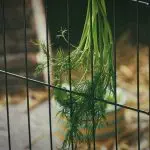Muscle soreness after exercise can be alleviated naturally with kratom varieties like Maeng Da and Red Bali. Maeng Da, potent with higher mitragynine levels, offers swift relief for intense workouts or chronic muscle discomfort, making it popular among fitness users. Red Bali, with a gentler approach, provides balanced alkaloids for gradual yet effective pain management, ideal for lower dosages and combining with anti-inflammatory herbs. Both differ in potency, with Maeng Da being stronger, catering to specific recovery needs while considering medical consultations for safe use.
Muscle soreness, a common post-workout nuisance, can be alleviated through natural remedies. Among these, kratom stands out, offering potential relief without the side effects of traditional painkillers. This article explores two prominent kratom strains: Maeng Da and Red Bali. We’ll delve into the understanding of muscle soreness, its causes, and how each strain’s unique properties contribute to soothing aching muscles, highlighting the benefits of Maeng Da vs Red Bali for targeted relief.
- Understanding Muscle Soreness and Its Causes
- Maeng Da Kratom: Properties and Potential Benefits for Muscle Relief
- Red Bali Kratom: Effectiveness and Considerations for Soothing Soreness
Understanding Muscle Soreness and Its Causes
Muscle soreness is a common issue experienced by people of all fitness levels, from casual exercisers to elite athletes. It’s the body’s natural response to physical activity, particularly intense or unfamiliar movements. This discomfort can range from mild irritation to severe pain and typically peaks 24-48 hours after exercise. Understanding the causes behind muscle soreness is key to managing it effectively.
Several factors contribute to post-exercise muscle soreness. One of the primary culprits is delayed onset muscle soreness (DOMS), which occurs when microscopic damage is done to muscle fibers during strenuous activity. This damage triggers an inflammatory response, leading to pain and stiffness. Varieties of kratom, such as Maeng Da and Red Bali, have gained attention for their potential soothing effects on sore muscles. While both offer natural relief, Maeng Da is known for its higher potency and balanced blend of alkaloids, making it a popular choice for those seeking intense yet well-rounded benefits. In contrast, Red Bali kratom is milder but offers a more relaxing experience, which can aid in recovery without causing drowsiness.
Maeng Da Kratom: Properties and Potential Benefits for Muscle Relief
Maeng Da Kratom, known for its potent properties, has gained attention in the natural remedy space, particularly for muscle soreness relief. Unlike Red Bali kratom, which is more well-known for its relaxing effects, Maeng Da offers a unique profile with higher levels of mitragynine, the primary active compound. This increased concentration provides a more direct impact on pain receptors, making it a preferred choice for those seeking rapid and effective muscle relief.
The differentiating factors between Maeng Da and Red Bali kratom are significant. Maeng Da’s robust properties allow for faster action, providing targeted relief for post-workout soreness or chronic muscle discomfort. Its ability to interact with opioid receptors without the same level of side effects as prescription painkillers makes it an intriguing option for natural pain management. This distinct character has contributed to its growing popularity among fitness enthusiasts and individuals looking for alternative solutions for muscle-related issues.
Red Bali Kratom: Effectiveness and Considerations for Soothing Soreness
Red Bali Kratom has gained recognition for its potential in alleviating muscle soreness, offering a natural alternative to over-the-counter pain relievers. This strain, derived from the Mitragyna speciosa plant, is known for its balanced blend of alkaloids, including 7-hydroxy mitragynine and mitragynine, which contribute to its soothing properties. Unlike some more potent varieties like Maeng Da, Red Bali is often preferred for its gentle yet effective approach to pain management.
Considerations when using Red Bali for muscle soreness include dose and method of consumption. It’s important to start with a lower dosage, as the effects may be gradual but lasting. Consuming Red Bali tea or capsules is common, allowing for precise control over the amount ingested. Additionally, combining it with other anti-inflammatory herbs or supplements can enhance its effectiveness. However, individuals with certain medical conditions or those taking medications should consult healthcare professionals before incorporating kratom into their soreness relief routine, ensuring a safe and personalised approach.
Kratom, particularly Maeng Da and Red Bali varieties, offers a promising natural alternative for muscle soreness relief. Maeng Da’s potent analgesic properties and anti-inflammatory effects make it an effective choice for quick pain management. On the other hand, Red Bali kratom provides a gentler approach, ideal for long-term use due to its relaxing and soothing qualities. Both strains have their unique benefits, catering to different preferences in managing muscle discomfort. When considering maeng da vs red bali, understanding your needs and tolerances is key to finding the best fit for your muscle relief routine.






